Noticias del mercado & perspectivas
Anticípate a los mercados con perspectivas de expertos, noticias y análisis técnico para guiar tus decisiones de trading.

New U.S. Sanctions on Russia as Putin Conducts Nuclear Tests
The U.S. has imposed new sanctions on Russia's two largest oil companies, Rosneft and Lukoil, after planned peace talks between Trump and Putin collapsed on Wednesday.
Oil prices spiked 3% after the announcement, with Brent crude hitting $64 per barrel.
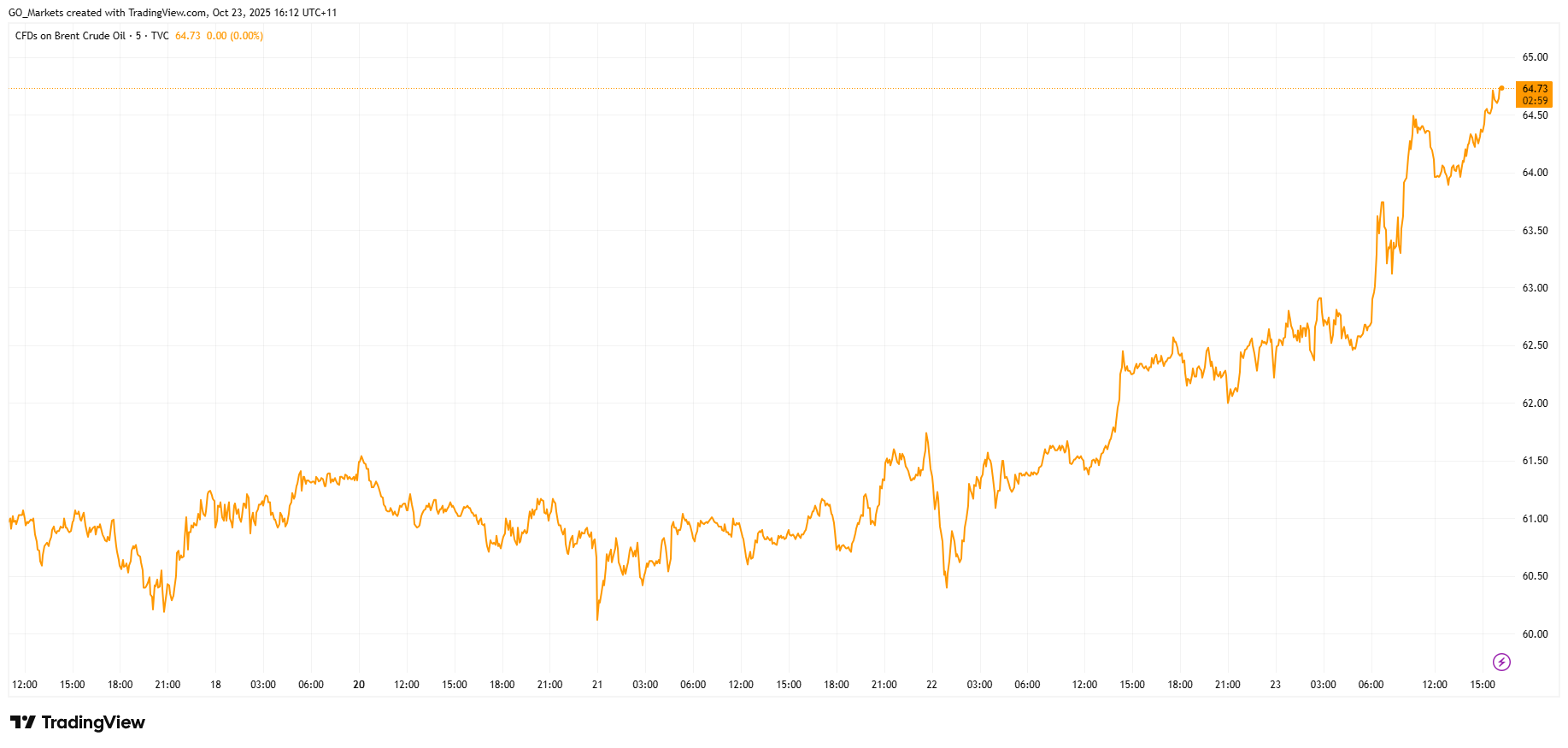
The targeted companies are among the world's largest energy exporters, collectively shipping about three million barrels of oil daily and accounting for nearly half of Russian production.
The sanctions build on recent European measures, as the UK targeted the same companies last week and the EU approved its own sanctions package on Wednesday.
In a show of force coinciding with the new sanctions, Putin supervised strategic nuclear exercises on Wednesday involving intercontinental ballistic missile launches from land and submarine platforms.
While the Kremlin emphasised these were routine drills, the highly coincidental timing is notable.
For markets, the key question now is whether secondary sanctions will follow, and if Trump’s enforcement remains strict. Traders will watch closely for any TACO signals that see Trump ease pressure in an attempt to restart negotiations.
Historic PM Wasting No Time on Celebrations
Sanae Takaichi made history this week as Japan's first female Prime Minister. The 64-year-old conservative leader, dubbed the "Iron Lady,” is already rolling out an aggressive policy agenda that could reshape Japan's economic and geopolitical position.
Her first major move is an economic stimulus package expected to exceed US $92 billion. The package includes abolishing the provisional gasoline tax and raising the tax-free income threshold from ¥1.03 million ($6,800), moves designed to put more money in consumers' pockets and battle inflation.
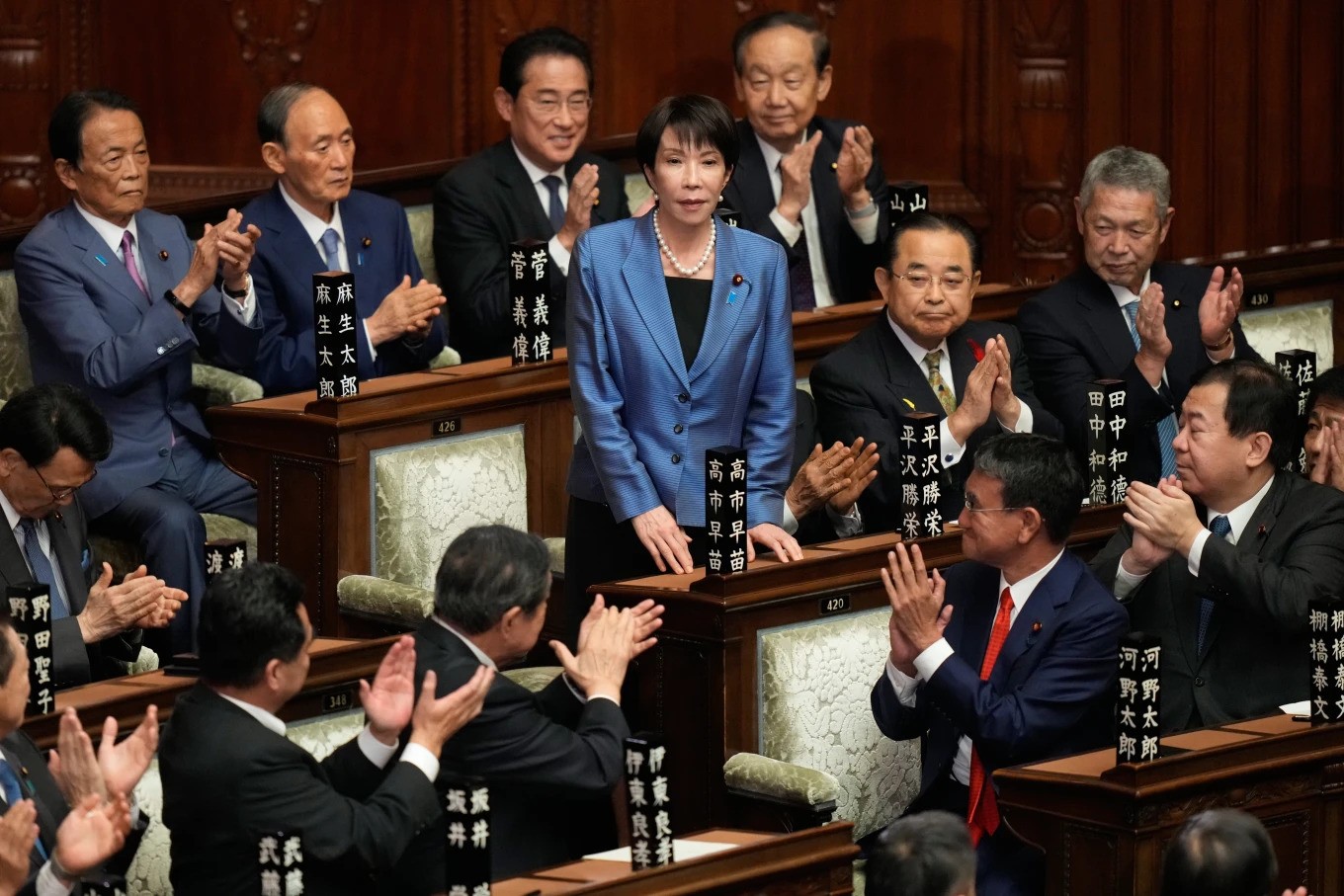
Her next move will come when Trump arrives in Tokyo next week, as the Japanese government is finalising a purchase package including Ford F-150 pickup trucks, US soybeans, and liquefied natural gas as sweeteners for trade talks.
Takaichi has campaigned on being a champion for expansionary fiscal policy, monetary easing, and heavy government investment in strategic sectors, including AI, semiconductors, biotechnology, and defence.
Critical Workers to Miss First Paycheck Due to Shutdown
The U.S. government shutdown is on the verge of creating a crisis for aviation safety, with 60,000 workers set to miss their first full paycheck this week.
These essential workers, who earn an average of $40,000 annually, already saw shortened paychecks last week. By Thursday, many will receive pay stubs showing zero compensation for the coming period, forcing impossible choices between basic necessities and reporting to work.
During the last extended shutdown, TSA sick-call rates tripled by Day 31, causing major delays at checkpoints and reduced air traffic in major hubs like New York — disruptions which are directly attributed to pressuring the end of the previous shutdown.
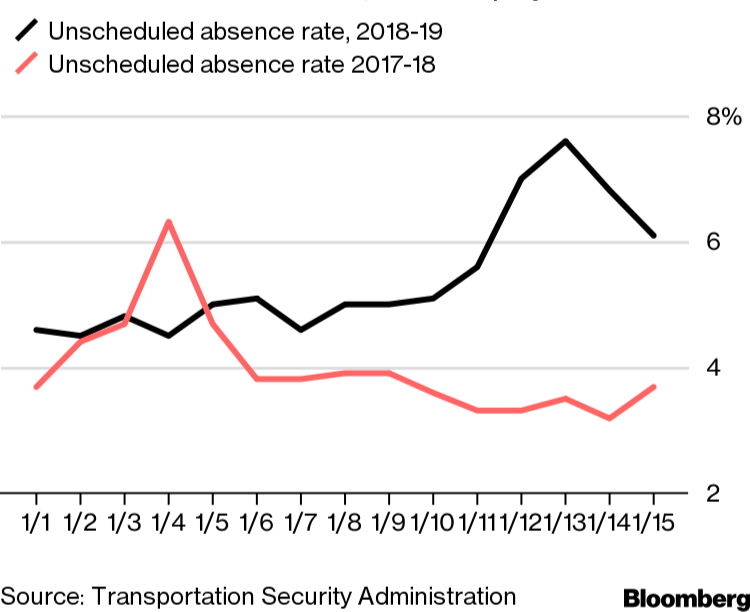
The National Air Traffic Controllers Association warns that similar pressures are building, with many workers soon to be facing a decision between attending their shift or putting food on the table.


USD was slightly lower on Monday with DXY hitting a low of 104.140, holding above the 104 support level. News was light with only New Home Sales of any note, which missed modestly to the downside (662k vs the expected 675k). There was some Fed speak, the highlight being Fed hawk Bostic where he reiterated his desire of just one rate cut in 2024, this failed to make much impact on the Dollar though.
AUD and NZD saw gains to differing degrees against the USD with AUD outperforming, continuing the steep rally in AUDNZD to see the pair touching on 1.09 and firmly in overbought territory. Both AUD and NZD supported by the surprise Yuan fix by the PBoC that was much firmer than forecast. AUDUSD initially tested Friday's low at 0.6510, before the fix and improving risk sentiment saw it reverse course to hit a high of 0.6546.
USDJPY was ultimately flat in a tight ranged session. Some more jawboning from top currency diplomat Kanda saying that the BoJ has been closely watching “FX moves with a high sense of urgency and will take appropriate steps to respond” saw the talk of intervention arise with Bank of America noting that intervention is seen as a 'realistic option' to support the Yen, especially if the USDJPY cross rises to the 152-155 zone.
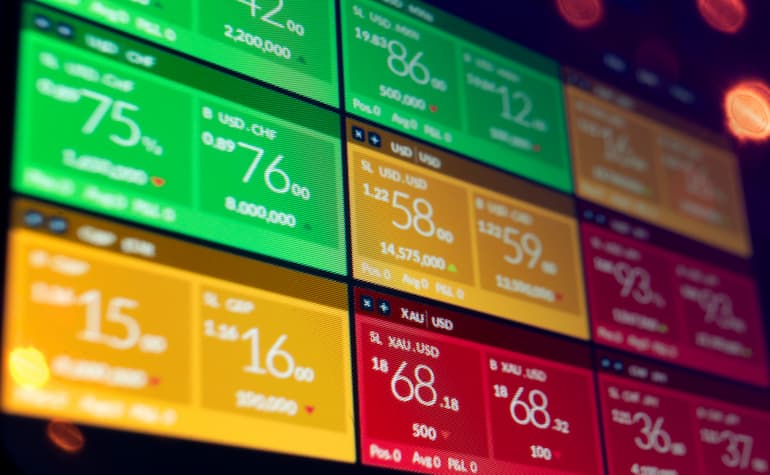

JPY was the currency everyone was watching coming into the pivotal BoJ meeting on Tuesday. The BoJ, as widely telegraphed, ended 17 years of negative interest rates, ETF purchases and their yield curve control policy. While a big move from the central bank there was no real surprise, with USDJPY surging to touch on 151, well into the “intervention zone” above 150.
The US Dollar Index was bid on JPY weakness, seeing DXY briefly rise above 104.00 to a peak of 104.06 in the UK session before paring some gains head of today’s closely watched FOMC meeting. AUDUSD dropped to 1 week lows after the RBA rate decision which left rates on hold as expected, but pulled back slightly on the tightening bias namely a language change from “further increase in interest rates cannot be ruled out “ to “not ruling anything in or out on interest rates”. NZD saw weakness in sympathy of the Aussie although AUDNZD saw marginal gains but failed to breach 1.08 with a high of 1.0793.


USD saw marginal weakness on Wednesday in a quiet news day. The US Dollar Index (DXY) pushing to lows after a strong 30yr Treasury saw yields drop and DXY briefly breaking beneath Tuesdays low of 102.72. A turn around later in the session saw DXY retake the 50% Fib support level at 102.80 ahead of today’s Retail Sales, Jobless Claims, and PPI data.
EUR saw decent gains vs the Dollar, with EURUSD setting a weekly high of 1.0948. ECB member Villeroy spoke, saying the ECB is winning the inflation battle, but cuts are more likely appropriate in June rather than April. EURUSD holding the key 1.09 support so far this week, with 1.10 the next major resistance level to the upside.
USDJPY was ultimately flat in a whipsawing session that saw USDJPY testing 148.00 to the upside. Before pairing gains as the Yen strengthened on a report from Reuters suggesting that early signs suggest a strong outcome in the annual wage talks that have heightened the chances that the BoJ will end NIRP next week. Gold popped on Wednesday, bouncing off the 2151 support level and recouping most of Tuesday’s losses to head into the APAC session at 2175 USD an ounce, with the next upside resistance the all-time high at 2195.
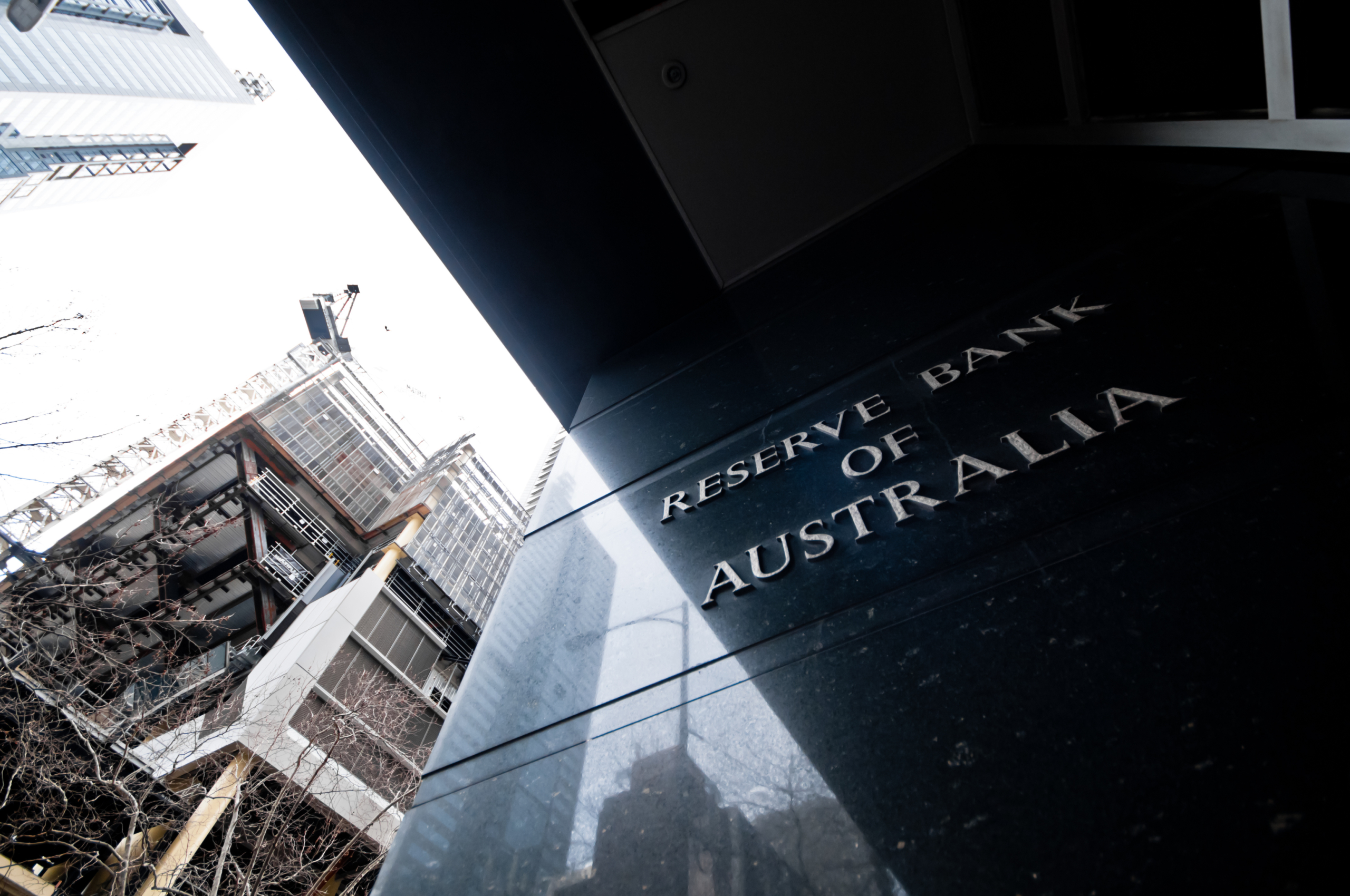

As April draws to a close, the global economy stands at a pivotal juncture, grappling with the resurgence of inflationary pressures that refuse to retreat. In fact, it feels as though the inflation genie has re-emerged, asking, "Oh, you want more?" This resurgence prompts a crucial question: have we truly witnessed the peak of inflation, and consequently, the peak in interest rates, or are we merely witnessing a temporary lull before central banks are compelled to escalate interest rates further? The market has become entangled in this debate over the past few weeks, and it's far from reaching a resolution.
At the heart of the matter lies 'sticky' inflation. Economies such as Australia, the United States, and New Zealand are grappling with persistent price increases in essential fixed goods and services, including insurance, rent, housing costs, and utilities. The resilience of inflation in these sectors underscores the enduring impact of global economic forces on household budgets.
Remarkably, despite facing a post-COVID landscape fraught with challenges, households in these nations have displayed remarkable resilience. They have weathered the storm of rising interest rates while managing to maintain or marginally adjust their spending habits. Such resilience would typically be viewed as a positive narrative in a conventional economic cycle, signaling prudent financial management and adaptability.
However, the current economic landscape is anything but conventional. Against the backdrop of a global interest rate cycle reaching decade-high levels, the resilience of households and the absence of significant spending contractions raise concerns. Will tentative central banks be forced to raise rates again, rather than enact the forecasted rate cuts that were almost certain just eight weeks ago?
The chart depicting the change in the 30-day interbank cash rate implied yield curve from the start of March to the end of April vividly illustrates this shift. The difference is staggering. The resurgence of inflationary pressures threatens to upend optimistic projections.
It challenges the notion that the peak of the current economic cycle has already been reached. Instead, it suggests that the trajectory of interest rates may continue to trend upward, defying earlier forecasts and unsettling financial markets. From and FX perspective this is creating and interesting situation in the policy divergences of other central banks.
The US is facing a similar issue to that of the RBA - market pricing for the Federal Funds rate has gone from a fully pricing in 3 rate cuts with the real possibility of a 4 th in 2024 too just 1 rate cut in 2024 and only 2 cuts in 2025. Both are facing much higher rate situations in 2024. Compare that to the likes of European Central Bank (ECB), Swiss National Bank (SNB), Bank of Canada (BoC), and the Riksbank.
All are signalling potential rate cuts in upcoming meetings. In the case of the ECB it looks like being as early as June. This policy divergence creates significant implications for FX markets.
Bullish bets in the AUD have been coming thick and fast as interest rate differentials has seen crosses moving firmly in the AUD’s favour. EURAUD, AUDCAD, AUDJPY and the likes In the case of the AUDUSD this pair is hard to read as both have similar dynamics. The rule of thumb in a scenario like this is ‘all roads lead to the USD’ and explains why the AUD is lagging in this pair but not elsewhere.
On the USD – the clearest example of the pressure it is putting on the rest of its peers is USDJPY. For the first time since 1990 USDJPY passed Y160. It would appear this is a market test for the Bank of Japan.
Does it defend its falling currency? Does it lose its authority due to it losing control of its control mechanism? The economic fundamentals make this a very interesting question indeed.
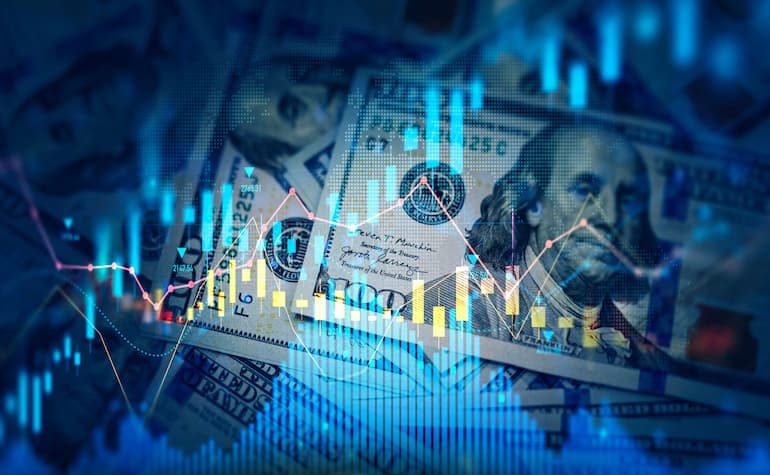

With an ECB June cut looking likely, FX traders will start looking at the policy path beyond June. Most analysists are calling that the European Central Bank will not cut rates at consecutive meetings and deliver only 75bp of total easing in 2024 based on current data and recent comments from ECB members, the latest being Governing Council member Madis Muller who seemed to stress exactly that point this week. EURUSD has been trading lately It appears that the divergence narrative - triggered by US data and the ECB in-meeting communication – has started to fade slightly, With EURUSD bouncing nicely off support at 1.06 over the last week.
Improvements in the eurozone economic outlook probably playing a role in making the hawks reluctant to give in to a dovish policy path. A June cut is still the base case, but the accompanying message may fail to push rates much lower. That potentially limits how far EURUSD can fall on higher USD rates.
Today, the ECB publishes the CPI expectation surveys for March. In February, the 1-year gauge came in at 3.1% and the 3-year at 2.4%. Expectations are probably for a nudge lower in both surveys.
Still, the dollar story should drive most EURUSD moves today: we see risks skewed to a higher dollar and do not see the pair being able to trade sustainably at 1.0700+.
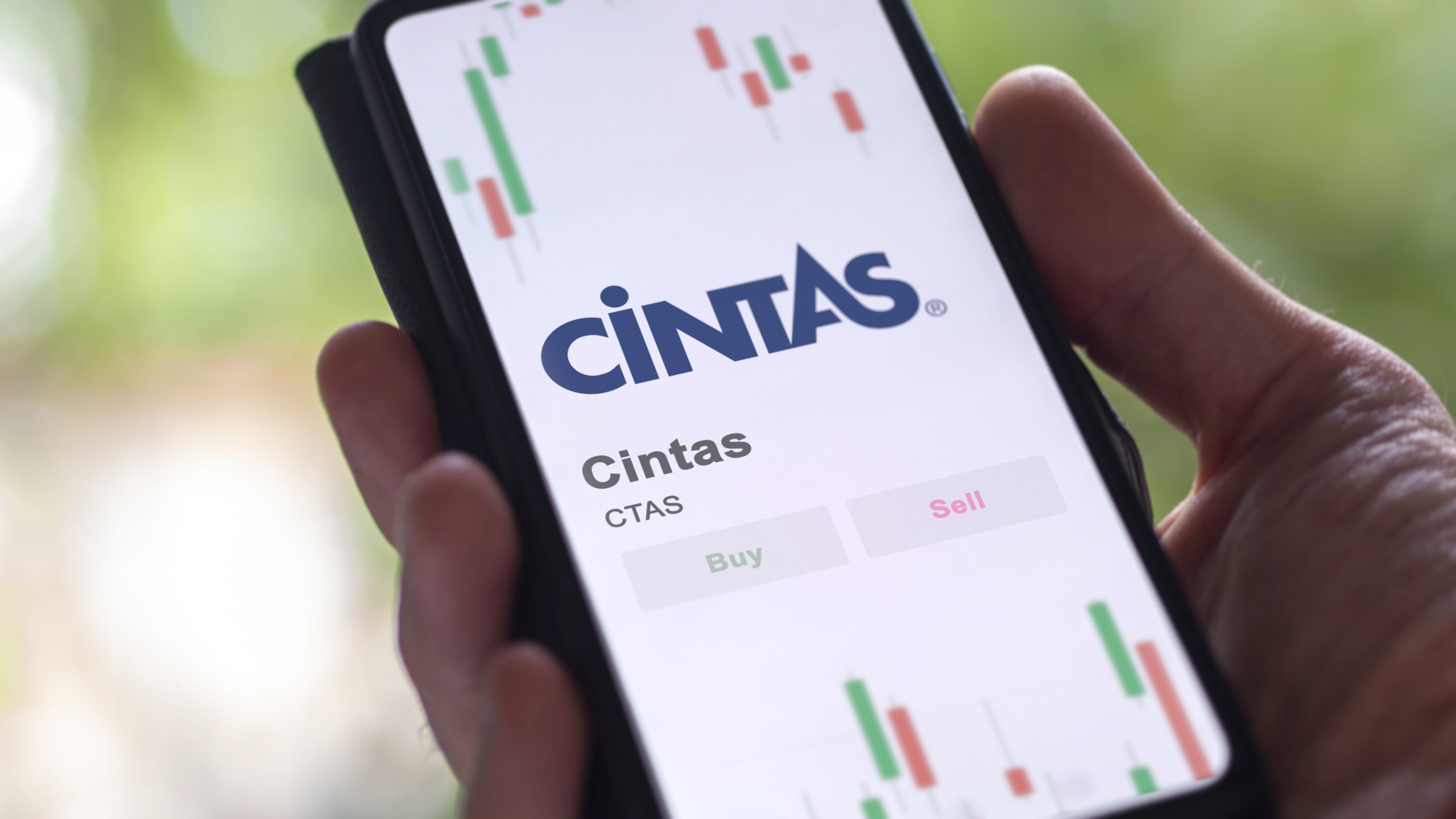

Q1 earnings season is nearly finished but there are still a few companies expected to release their latest results for the previous quarter. On Wednesday, Cintas Corporation (NASDAQ: CTAS) announced their latest financial results. American company that specializes in the manufacturing and sale of workwear and uniforms achieved revenue of $2.406 billion in fiscal 2024 third quarter, which was above analyst estimate of $2.39 billion.
Earnings per share (EPS) also topped estimates at $3.84 vs. $3.576 per share expected. Revenue and EPS were up by 9.9% and 22.3% year-over-year respectively. Company overview Founded: 1929 Headquarters: Mason, Ohio, United States Number of employees: 44,500 (2023) Industry: Service Key people: Todd Schneider (CEO), Scott D.
Farmer (Executive Chairman), Mike Thompson (Executive Vice President and CAO) CEO commentary "Our third quarter results reflect the outstanding dedication and execution of our employees, whom we call partners. Each of our operating segments continue to execute at a high level, which led to robust revenue growth of 9.9%, record high gross margin of 49.4%, record high operating margin of 21.6% and diluted EPS growth of 22.3%," Todd Schneider, CEO of Cintas said in a statement to shareholders. Schneider also announced that the company is raising its guidance for 2024: "Based on our third quarter results, we are increasing our full fiscal year financial guidance.
We are raising our annual revenue expectations from a range of $9.48 billion to $9.56 billion to a range of $9.57 billion to $9.60 billion and our diluted EPS from a range of $14.35 to $14.65 to a range of $14.80 to $15.00." Stock reaction The stock was up by over 9% on Wednesday, trading at above $700 level for the first time ever during the trading session. Stock performance 5 day: +8.56% 1 month: +9.29% 3 months: +13.71% Year-to-date: +14.38% 1 year: +48.20% Cintas stock price targets Barclays: $700 Truist Financial: $660 Stifel: $585 Royal Bank of Canada: $645 JP Morgan Chase & Co.: $640 Deutsche Bank: $590 Citigroup: $530 Robert W. Baird: $540 Bank of America: $565 Wells Fargo & Company: $500 UBS Group: $575 Morgan Stanley: $441 Argus: $540 Jefferies Financial Group: $487 Cintas Corporation is the 261 st largest company in the world with a market cap of $69.82 billion, according to CompaniesMarketCap.
You can trade Cintas Corporation (NASDAQ: CTAS) and many other stocks from the NYSE, NASDAQ, HKEX and ASX with GO Markets as a Share CFD on the MetaTrader 5 platform. To find out more, go to "Trading" then select "Share CFDs". GO Markets offers pre-market and after-market trading on popular US Share CFDs.
Why trade during extended hours? Volatility never sleeps. Trade over earnings releases as they happen outside of main trading hours Reduce your risk and hedge your existing positions ahead of a new trading day Extended trading hours on popular US stocks means extended opportunities Sources: Cintas Corporation, TradingView, MarketWatch, MarketBeat, CompaniesMarketCap

